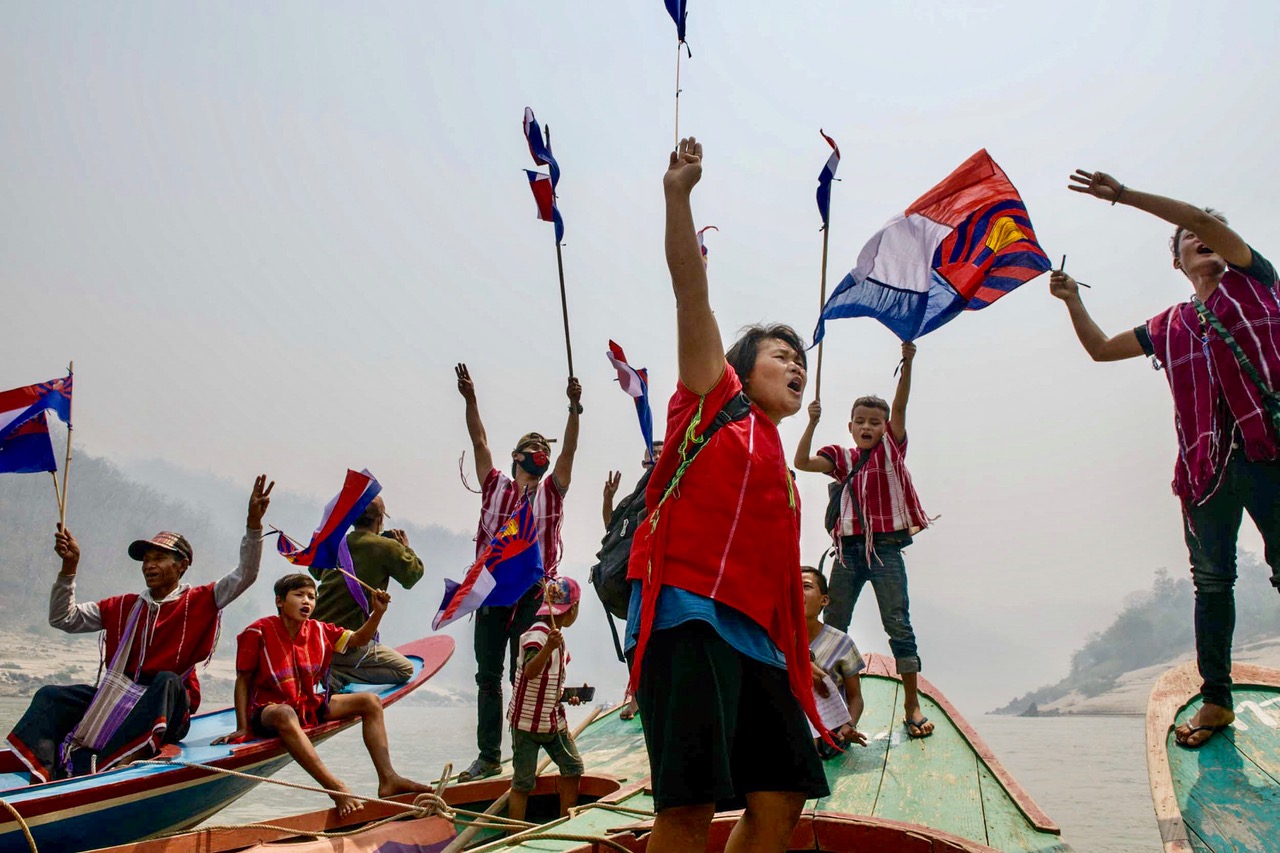|
|
|
Following the February coup, the violence used by the security forces against civilian protestors in Myanmar’s towns and cities has shocked public opinion around the world. But, as Naw Hsa Moo and Dominique Dillabough-Lefebvre explain in this commentary, such tactics have long been used by the Myanmar armed forces in military operations in the country’s ethnic states and regions. Awareness is now building and, as they argue, the military coup has brought new understanding and sympathy between pro-democracy and ethnic nationality movements.
See the complete list of all the Myanmar commentaries.
|
|
|
|
 Villagers in Mutraw District, Karen State, protest on the Salween River against military occupation / Photo credit Jittrapon Kaicome Villagers in Mutraw District, Karen State, protest on the Salween River against military occupation / Photo credit Jittrapon Kaicome
|
|
|
|
|
|
|
| |
While Myanmar’s cities become military occupations, conflict persists in the ethnic borderlands
A Myanmar Commentary by Naw Hsa Moo & Dominique Dillabough-Lefebvre
12 March 2021
|
Since the seizure of power by the military State Administration Council (SAC) on 1 February, mass protests have swept towns and cities in every state and region in Myanmar. As the days have passed by, civilians have faced the brunt of an increasingly aggressive response from the national armed forces, known as the Tatmadaw, whose indiscriminate use of force has now led to over 70 killed, countless injured, and more than 2000 people detained. And yet, despite the heightened use of military force, the general public throughout the country continue to stand in defiance, leading creative protests, with people of diverse ethnicities and backgrounds joining strikes and the civil disobedience movement.
All nationality peoples are being impacted. For lowland Bamar (Burman) people, the majority ethnic group, the current repression against civilians carries terrifying reverberations of past violent state-led responses towards demonstrators, most notably during the 1988 pro-democracy protests. However, for those living in many non-Bamar areas, the militarisation and pervasive sense of fear accompanying current events are sadly all too familiar. For many decades, they have been regular features of daily life, notably in the Kachin, Karen, Kayah (Karenni), Mon, Rakhine (Arakan) and Shan States.
This is especially the case in Karen State in Myanmar’s southeast. Home to what is often considered the world’s longest-running civil war, conflict has escalated between the Tatmadaw and the armed opposition Karen National Union (KNU), with over 6,000 civilians displaced from their villages since the Tatmadaw intensified military operations in December 2020. The majority people living here identify as Karen, one of the country’s largest nationality groups, and are largely farming communities living in forested hills and winding valleys that run down the Thailand border. In response to the twin threats of military incursions and the SAC coup, villagers across Kler Lwee Htu (Nyaunglebin) and Mutraw (Hpapun) Districts have been regularly demonstrating, demanding the removal of the Tatmadaw from their lands and expressing solidarity with the protest movement across the country.
Whether in conditions of war or peace, Karen communities have faced the same challenges in every era of government since the country’s independence in 1948. A ceasefire was agreed between the government and the KNU in 2012 but, to date, this has not brought about a significant reduction in militarisation in many areas. Rather, the patterns of conflict and Tatmadaw encroachment have continued. In particular, the recent increase in Tatmadaw activity is linked to road-building, the expansion of a network of military roads in northern Karen State that first began during offensives in the 1990s.
|
|
|
|
|
|
| |
|
|
|